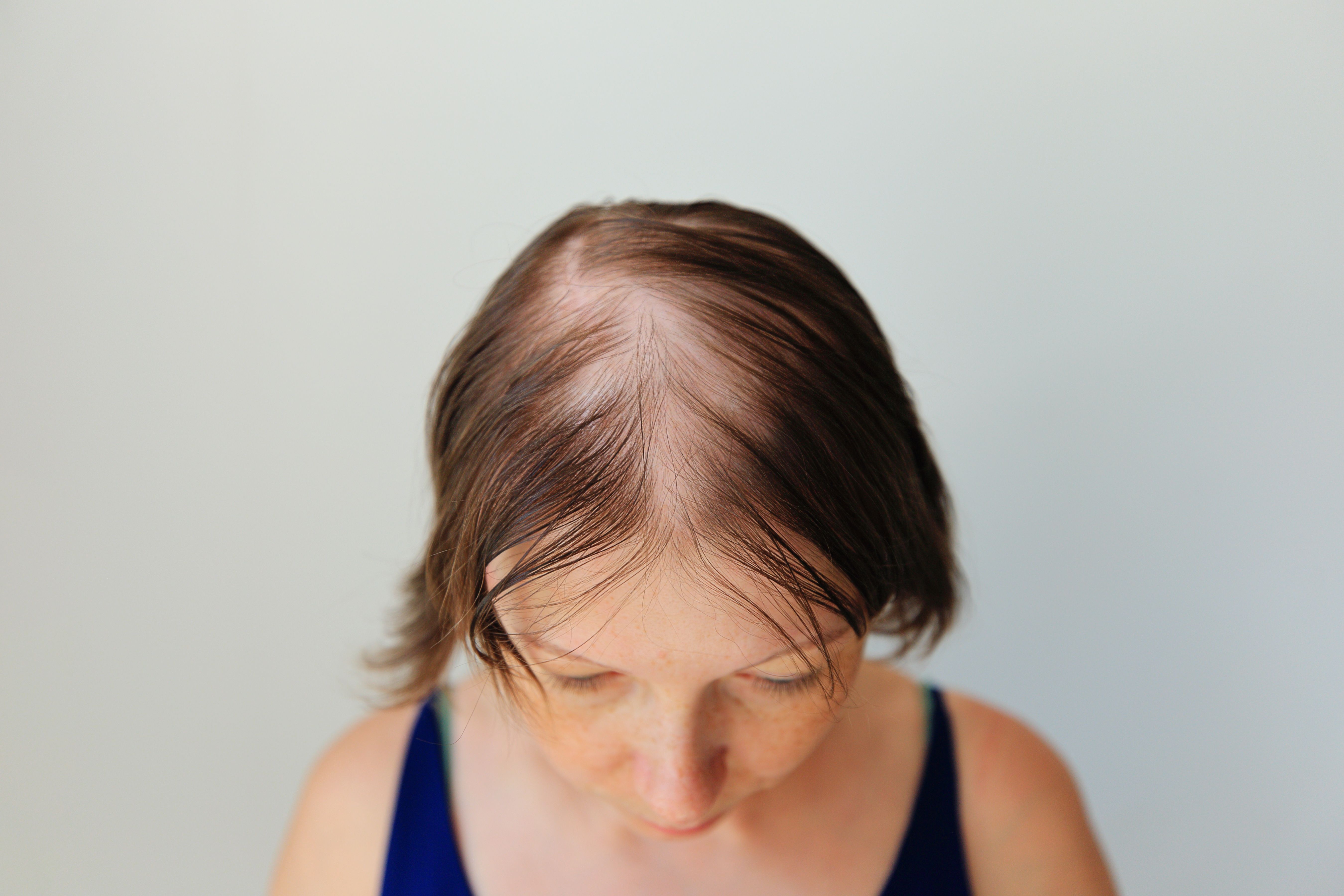- Acne
- Actinic Keratosis
- Aesthetics
- Alopecia
- Atopic Dermatitis
- Buy-and-Bill
- COVID-19
- Case-Based Roundtable
- Chronic Hand Eczema
- Chronic Spontaneous Urticaria
- Drug Watch
- Eczema
- General Dermatology
- Hidradenitis Suppurativa
- Melasma
- NP and PA
- Pediatric Dermatology
- Pigmentary Disorders
- Practice Management
- Precision Medicine and Biologics
- Prurigo Nodularis
- Psoriasis
- Psoriatic Arthritis
- Rare Disease
- Rosacea
- Skin Cancer
- Vitiligo
- Wound Care
News
Article
Uptitration of Baricitinib Effective in Improving Hair Growth in Patients With Alopecia Areata
Author(s):
Patients with episodes longer than 4 years had a delayed response rate.
Uptitration to baricitinib 4 mg in patients who did not respond to 2 mg resulted in a positive response for hair growth in those with severe alopecia areata (AA).1 This analysis pooled 2 multicenter, placebo-controlled, phase 3 randomized clinical trials of 1200 patients with a Severity of Alopecia Tool (SALT) score greater than 50.
Nadya Kolobova/AdobeStock

Patients were randomized to receive baricitinib 4 mg, baricitinib 2 mg, or placebo. At week 36, patients nonresponsive to placebo were changed to either baricitinib 2 mg or baricitinib 4 mg. In patients given baricitinib at baseline, no change was made until week 52.
All participants who were given baricitinib 2 mg at baseline and still had a SALT score greater than 20 at week 52 were uptitrated to baricitinib 4 mg. Patients who had a SALT score higher than 20 at both week 52 and 76 visits were discontinued from the study unless they had reached a minimum 2-point improvement in clinician-reported outcome (ClinRO) measures for eyebrow hair loss or eyelash hair loss. BRAVE-AA1 and BRAVE-AA2 measured the efficacy of uptitration between week 52 and week 76.
Of the 340 patients receiving baricitinib 2 mg, at week 52, 62.4% (n = 212) had a SALT score greater than 20 and were uptitrated to baricitinib 4 mg. The nonresponders had a mean SALT score of 90.1 at baseline and 67% (n = 142) had very severe AA (SALT score 95-100). Among patients in the baricitinib 2 mg at baseline cohort, 56.8% (n = 193) had very severe AA.
Among nonresponders, current episode of 4 years or longer was higher than among the original cohort (83 [39.2%] vs 110 [32.4%, respectively). By week 76, 28.8% (n = 61) of patients discontinued the uptitration substudy, most often due to automatic discontinuation.
Among patients receiving baricitinib 2 mg at baseline who were uptitrated to 4 mg at week 52, 25.9% (n = 55) had achieved a SALT score of 20 or lower by week 76. Eyebrow and eyelash hair also responded to uptitration, “with an almost doubling of the proportion of patients achieving complete or nearly complete regrowth by week 76.”1
A limitation of the study included that the criteria and timing of uptitration were predetermined in the protocol and not individualized to a patient’s response to treatment.
According to Ko et al, “In this pooled analysis of the BRAVE-AA1 and BRAVE-AA2 trials, uptitration was effective in increasing the response of scalp, eyebrow, and eyelash hair regrowth in patients who had not yet achieved at least 80% coverage of scalp after 52 weeks of therapy with baricitinib, 2 mg.”
Reference
- Ko JM, Mayo TT, Bergfeld WF, et al. Clinical outcomes for uptitration of baricitinib therapy in patients with severe alopecia areata: A pooled analysis of the BRAVE-AA1 and BRAVE-AA2 trials. JAMA Dermatol. August 09, 2023. Accessed August 14, 2023. doi:10.1001/jamadermatol.2023.2581 https://jamanetwork.com/journals/jamadermatology/fullarticle/2808309?guestAccessKey=06307977-88a1-4f17-bde8-212d7668dd8c&utm_source=silverchair&utm_medium=email&utm_campaign=article_alert-jamadermatology&utm_content=olf&utm_term=080923&utm_adv=null
Newsletter
Like what you’re reading? Subscribe to Dermatology Times for weekly updates on therapies, innovations, and real-world practice tips.











